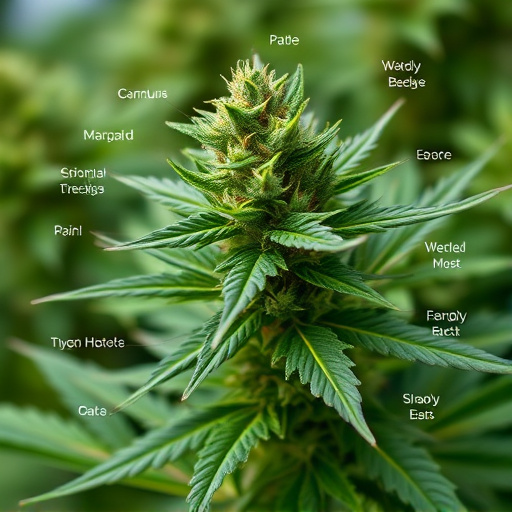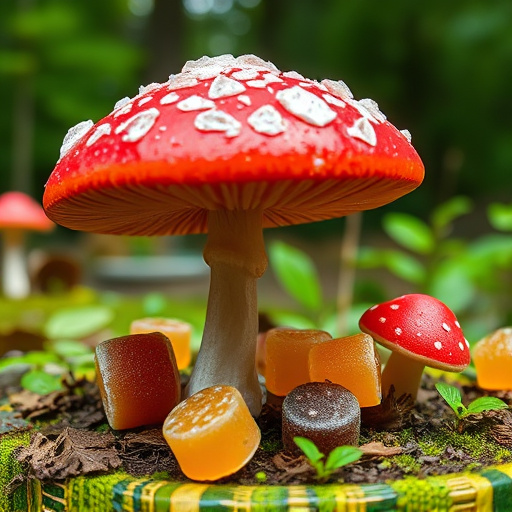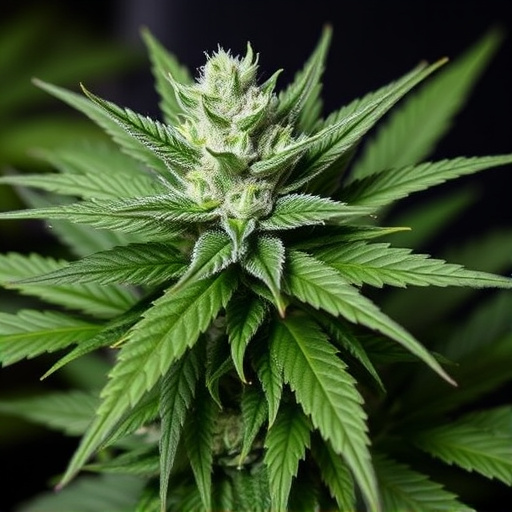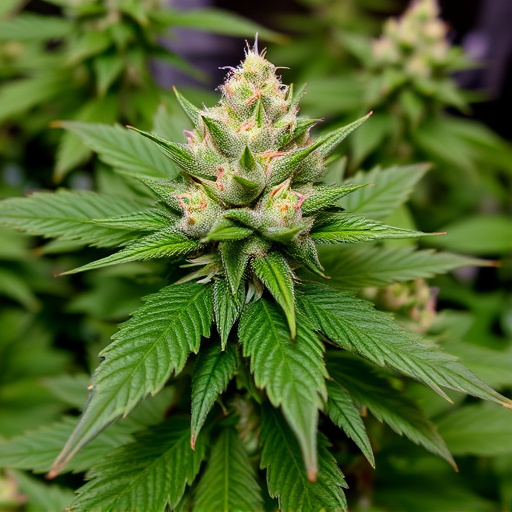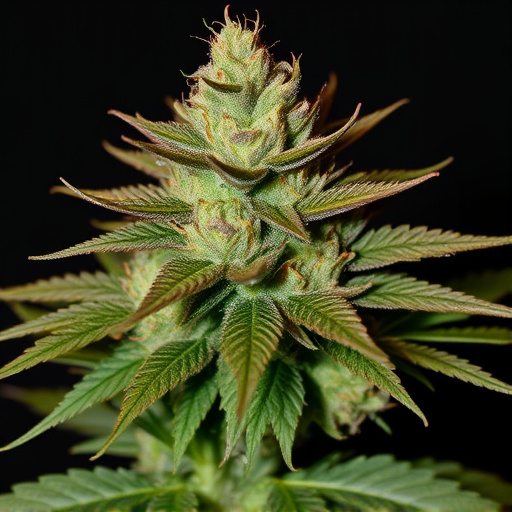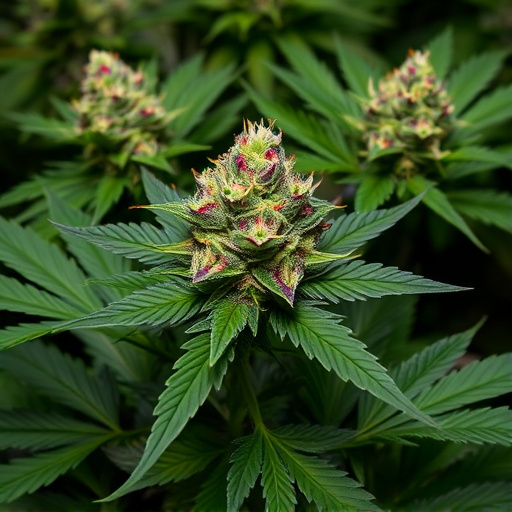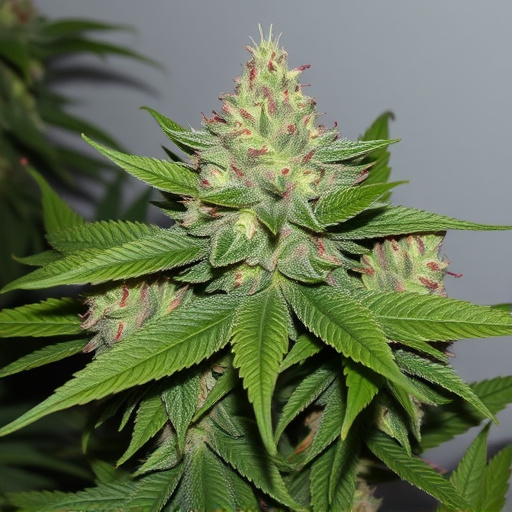The distinctive aroma of cannabis, particularly in Indica Kush strains, is primarily determined by its genetic makeup and terpene profile. Terpenes, volatile aromatic compounds, interact with cannabinoids like THC and CBD, creating diverse scents ranging from floral and fruity to spicy and piney. Environmental conditions play a crucial role in expressing these terpenes, affecting the aroma of Indica Kush strains grown under different settings. The perception of cannabis aroma is a complex interplay between olfactory reception and personal preferences, making each person's experience unique, especially with Indica Kush strains.
Uncover the intricate world of cannabis aroma, where every scent tells a story. This article delves into the multifaceted factors shaping cannabis’ unique olfactory experience, from the genetic composition and terpene profiles that form the basis of its essence, to environmental conditions influencing terpene expression. We explore how sensory perception plays a pivotal role, with individual olfactory reception and preferences contributing to the diverse aromas enjoyed by lovers of indica kush strains worldwide.
- Genetic Composition and Terpene Profile: The Foundation of Cannabis Aroma
- Environmental Factors: How Terpenes Express Themselves in Different Conditions
- Sensory Perception: Unraveling the Role of Olfactory Reception and Individual Preferences
Genetic Composition and Terpene Profile: The Foundation of Cannabis Aroma
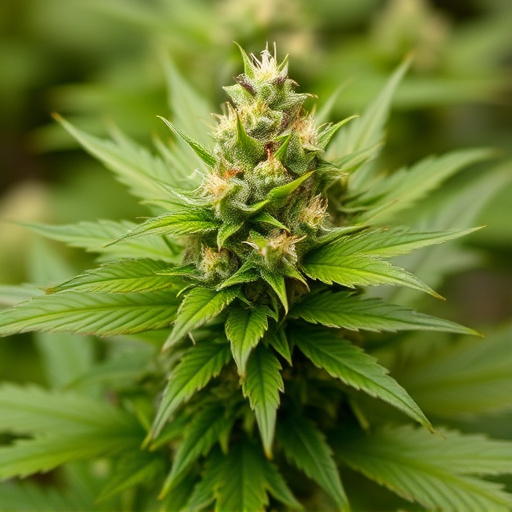
The genetic composition and terpene profile of cannabis plants are the fundamental building blocks that determine their distinctive aroma. Each strain, whether a soothing indica kush or a lively sativa, carries its own unique combination of compounds, resulting in a variety of scents. Indica kush strains, for instance, often exude earthy, musky, or fruity notes due to their specific terpene makeup. Terpenes, aromatic compounds produced by the plant, play a crucial role in not just scent but also flavor and potential therapeutic effects.
These volatile molecules interact with cannabinoids like THC and CBD, enhancing or modifying their aromas and potentially offering unique experiences for consumers. The complex interplay between genetics and terpenes creates the vast array of cannabis scents we know today, from floral and fruity to spicy, piney, and even sweet notes.
Environmental Factors: How Terpenes Express Themselves in Different Conditions
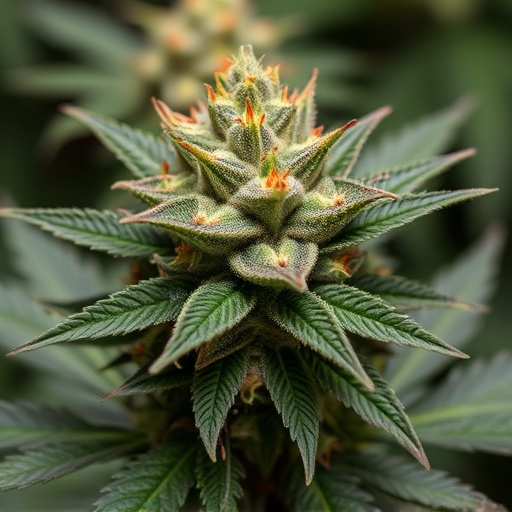
Environmental factors play a pivotal role in how terpenes, the aromatic compounds responsible for cannabis’ distinctive scent and flavor, express themselves. These compounds are highly sensitive to temperature, humidity, and light exposure. In optimal conditions, with moderate temperatures (around 20-25°C), balanced humidity, and indirect sunlight, many terpenes thrive, contributing to the nuanced aroma of indica kush strains. However, drastic changes in these parameters can significantly alter terpene profiles.
For instance, high heat or prolonged exposure to direct sunlight might cause certain terpenes to degrade or evaporate more quickly, resulting in a different olfactory experience compared to when cannabis is cultivated under more controlled conditions. This is particularly relevant for outdoor grows where natural elements dictate the growth environment, potentially leading to varied terpene expressions within the same strain.
Sensory Perception: Unraveling the Role of Olfactory Reception and Individual Preferences

The sensory perception of cannabis aroma is a complex interplay between olfactory reception and individual preferences. Our sense of smell, facilitated by specialized receptor cells in the nose, plays a pivotal role in detecting and interpreting the vast array of chemical compounds present in cannabis flowers. These receptors trigger neural signals that travel to the brain, where they are interpreted as specific aromas and flavors.
Beyond scientific reception, individual preferences significantly shape our perception of cannabis aroma. Factors such as personal experience, cultural background, and even expectations can influence how we smell and interpret different strains like indica kush. For instance, some individuals may be more attuned to earthy tones, while others might prefer fruity or sweet notes. Understanding this interplay between biological reception and subjective experience helps us appreciate the diverse aromas offered by various indica kush strains.
The distinct aroma of cannabis, a key factor in its appeal and effectiveness, is shaped by a complex interplay of genetic composition, environmental influences, and individual sensory perception. Understanding these elements, from the terpene profiles of specific indica kush strains to how environmental conditions alter their expression, offers deeper insight into why different cannabis varieties evoke unique experiences. By unraveling these complexities, we can better appreciate and harness the power of aroma in enhancing our connection with this multifaceted plant.



